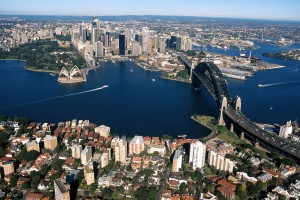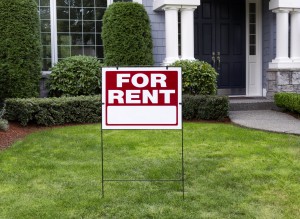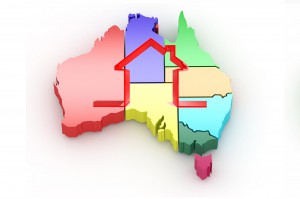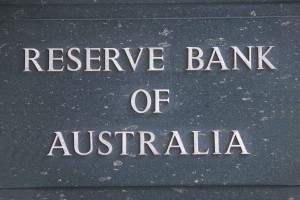What are our property markets up to? 
That’s probably the most common question I’m asked at the moment.
While most property investors started 2017 with confidence, many are now uncertain, and those who ask me “what’s going on” are often frustrated by my answer because there is not one market.
There are multiple markets, each at their own stage of the property cycle, but overall since moving through a peak rate of growth in November 2016, capital gains across Australia’s housing market have been losing momentum, with national dwelling values unchanged over the month of October.
To to help make some sense of what’s going on let’s look at the latest stats and charts from Corelogic.
Dwelling values were unchanged in October 2017
National dwelling values were unchanged in October with no movement in the combined capital city or combined regional indices either.
The slowdown in the pace of capital gains can be attributed primarily to tighter credit policies which have fundamentally changed the landscape for borrowers.
Lenders have tightened their servicing tests and reduced their appetite for riskier loans, including those on higher loan to valuation ratios or higher loan to income multiples
Sydney, Darwin and Canberra recorded value falls over the month while values were unchanged in Adelaide and Perth.

The last quarter
Dwelling values were 0.3% higher nationally over the three months to October 2017 quarter, their slowest quarterly rate of growth since May 2016.
Combined capital city values increased by 0.4% (their slowest growth since May 2016) and regional market values fell -0.1%.
Sydney, Perth and Darwin were the only capital cities in which values fell over the quarter.

The last year
Over the last year, Melbourne and Hobart have recorded value growth in excess of 10% while values are lower in Perth and Darwin.

WHAT’S HAPPENING AROUND THE STATES?
The charts above shows how fragmented our property markets are with Melbourne, Sydney and Hobart having decoupled from the other capital city markets last year.
MELBOURNE 
The Melbourne property market, which has been the top performing market over the last decade is taking a breather, after a whopping 11% growth over the last year.
Strong population growth (around 2.4% per annum) and a booming economy creating more jobs than anywhere else in the country have underpinned the Melbourne property market.
The Melbourne apartment market has not performed as well as the house market, but is starting to pick up as the First Home Buyers Grant as a raft of new home buyers enter the market buying up established apartments.

Melbourne is the only capital city where auction clearance rates remain above 70%, but there seems to be less depth to the market with fewer people at open for inspections and fewer bidders at auctions.

If you’d like to know a bit more about how to find investment grade properties in Melbourne please give the Metropole Melbourne team a call on 1300 20 30 30 or click here and leave your details.
SYDNEY
Sydney, property values grew a respectable 7% in the last 12 months.
Having said that, the Sydney has had virtually no overall growth for the last 6 months now, and the continual headlines warning of the end of the Sydney property boom is concerning many investors and potential home buyers who are standing in the sidelines waiting to see what happens. 
Of course there is not one “Sydney property market.”
There are multiple markets defined by geography, price and type of property.
And the market for A grade homes and investment grade properties is still strong.
And by the way… there is no evidence of a bubble bursting or a hard landing.
There are still a number of growth drivers including a strong economy, population growth and overseas investment (albiet at lower levels)
However prices are stabilising after more than five years of strong growth where values have risen by 70% during that time.

The lower auction clearance rates (below 70% for the last 3 months) in Sydney are getting lots of media attention, and sure this is a sign of a slowing market, but it’s only time to become concerned when auction clearance rates drop below 60%. and that’s not happening – not even on the long weekend.
A clearance rate in the 60% range is a sign of normal market conditions and this doesn’t concern me, particularly with respect to Sydney which has had a long sustained boom period and now we need the market to catch its breath and consolidate its price growth.

Price growth is now likely to moderate over the balance of this year, but the markets are fragmented with secondary properties being harder to sell.
On the other hand there seem to be fewer investment grade properties on the market meaning the Sydney buyers agents team at Metropole are finding strong competition at auction for A grade properties.
However, we’re finding a number of great properties off market for our clients.
If you’d like to know a bit more about how to find these investment gems give the Metropole Sydney team a call on 1300 20 30 30 or click here and leave your details.
BRISBANE
While the overall Brisbane’s property market only rose 2.7% over the last year, there is great potential upside for Brisbane houses which are considerably cheaper than Sydney or Melbourne.
Brisbane’s market is very fragmented and there are still some areas that are performing respectably with good investment prospects and great places for young families to live cheaply.
On the other hand, there is a significant oversupply of new high rise off the plan apartments overshadowing the inner city area and nearby suburbs with owners now giving significant incentives to attract tenants at a time of rising vacancy rates.
That’s why the Brisbane buyer’s agents at Metropole have been avoiding the apartment market for quite some time.
If you’d like to know a bit more about how to find investment grade properties in the Sunshine State please give the Metropole Brisbane team a call on 1300 20 30 30 or click here and leave your

ADELAIDE
Like the rest of Australia, the Adelaide property market is very fragmented with some suburbs showing three times the capital growth of others.
Overall home values are up 5.5 % over the last 12 months while unit values only increased by 1.3%.
I know some investors are looking for opportunities in Adelaide hoping (“speculating”) prices will increase but there are few growth drivers in Adelaide with fewer than 8,000 new jobs created there last year.


HOBART
Australia’s most affordable capital city, Hobart, delivered the highest capital growth over the last year (12.7%)
BUT KEEP IN MIND IT IS A VERY SMALL MARKET.
Last year, some 5,200 dwellings sold in Hobart, which is just 1% of the Australian market. 
It also accomodates a 1% share of Australia’s annual population growth.
It is a small place and it doesn’t take much to influence it.
The local economy is picking up helped by the redevelopment of the Royal Hobart Hospital and upgrades to universities, hotels and retail precincts.
Even though some commentators are suggesting it’s a good place to invest, I don’t agree as there are few long term growth drivers and despite the current fast rate of growth, dwelling values only increased 27.3% over the last 10 years.

DARWIN
The Darwin property market is still suffering from the effects of the end of our mining boom and our research suggests that house prices are likely to keep falling for much of this year.
Values across the city are 19.1% lower than their peak in August 2010
As opposed to the east coast capital cities where many jobs are being created, Darwin had a net increase of only 153 jobs last year, showing how its economy is languishing.
Darwin does not have significant growth drivers on the horizon and would be best avoided by investors.

CANBERRA
Canberra’s property market is a “quiet achiever” having performed well with home values increasing by 7.7% over the last year.
Other than Melbourne and Sydney, Canberra is the only market to have achieved levels of capital growth above inflation over the last decade.
But I don’t consider Canberra a good place to invest as their horrendous land tax rates chew into your cashflow more than anywhere else in Australia
 How are regional markets performing?
How are regional markets performing?
Like the big smoke, the regional markets are very fragmented:
- Newcastle (12.7%) and Wollongong (15.5%) benefitted from the ripple effect following Sydney’s boom.

- The lifestyle markets of Byron Bay (14.1%) and Port Macquarie (9.3%) also performed well.
- In Victoria, Geelong (7.9%) benefitted from the ripple effect of Melbourne’s high prices as well as improved infrastructure.
- In Queensland the Gold Coast (7.8%) and Sunshine Coast (5.7%) performed better than Brisbane, but I’d avoid these as investment locations becuase these markets are too volatile.
- Unfortunately Townsville, Rockhampton, Gladstone and Mackay are still experiencing price declines.
- Regional Tasmania has not performed well with price falls in Launceston (-1.2%), Burnie (2%), and Devonport (2.9%)
- Regional Western Australia is still suffering with Port Hedland (-33%) and Karratha (-22.6%) experiencing significant price declines.
Fewer property sales
The recent declining trend in settled house and unit sales has starting to level in the smaller capital cities with sales continuing to decline in the larger cities 
- It is estimated that there were 467,680 settled sales of dwellings nationally over the 12 months to October 2017 with 295,546 settled sales across the combined capital cities and 172,134 settled sales across regional markets.
- Nationally, the number of settled sales was -4.7% lower over the year with combined capital city sales -6.0% lower and combined regional market sales down -2.2%
- Transaction volumes have fallen over the past year in Sydney, Melbourne, Brisbane and Canberra but are higher across the remaining capital cities.

Rental growth has accelerated over the past year resulting in a slowdown in the slide in gross rental yields
- Rents are 2.8% higher over the year with capital city rents increasing 2.8% and regional market rents 2.9% higher

- Combined capital city rents are increasing at their fastest annual pace since April 2013
- Rents have increased over the past year in all capital cities except for Perth and Darwin however, the rate of change in rents over the past 12 months has been greater than the 12 month change a year ago in all capital cities
- Gross rental yields were recorded at 3.6% nationally in October 2017; 3.3% across the combined capital cities and 4.9% across the combined regional markets.
- Gross rental yields are lower than they were a year ago across all capital cities except for Darwin.


Discounting levels are falling while days on the market has risen from its recent lows
- The typical capital city dwelling which sells for less than its initial list price is being discounted by 5.8% compared to 6.1% 12 months ago.
- The level of discounting is currently lower than it was a year ago in Sydney, Melbourne, Hobart and Canberra and unchanged in Brisbane.
- The typical capital city dwelling is taking 41 days to sell which is as long as it took a year ago but up from a recent low of 36 days.
- The days on market figure is higher over the year in Sydney, Brisbane and Canberra and unchanged in Darwin.

The number of properties advertised for sale is lower than a year ago nationally but slightly higher across the capital cities
- The number of new properties advertised for sale is -2.5% lower than a year ago nationally and -0.8% lower across the combined capital cities.

- Sydney, Brisbane, Adelaide and Canberra are the only capital cities to currently have a greater number of new listings than they had a year ago.
- Over the past 28 days, total advertised properties were -5.3% lower than a year ago nationally but 1.0% higher across the combined capital cities.
- Melbourne, Perth, Hobart and Darwin were the only capital cities to have fewer total homes advertised for sale currently relative to last year.
- Total listings in Sydney are currently at their highest level since late 2012.

Auction clearance rates have eased from levels earlier this year
- Combined capital city auction clearance rates have remained below 70% for each of the past 22 weeks.
- Sydney’s final auction clearance rate has been below 70% each of the past 14 weeks and just reached its lowest levels since late 2015.
- Melbourne’s clearance rate has remained above 70% all year except for one week in August
- Earlier in the year Sydney and Melbourne have had clearance rates above 80% highlighting a marked slowdown, particularly in Sydney.

Broader economic data also has a significant impact on housing market conditions
Population growth remains at high levels however, most of the growth is occurring in NSW and Vic

The number of dwellings approved for construction have eased from record-high levels to above the long-term average with approvals lifting in September

Upgraders and investors remain the key drivers of housing demand however, investor demand is slowing and first home buyer demand is lifting, particularly in NSW and Vic on the back of stamp duty concessions available.


Mortgage rates remain at low levels however, investors are typically paying 60 basis points more on their mortgage than owner occupiers.

WHERE TO FROM HERE?
Overall, performance across Australia’s housing market remains as diverse as ever.
Historically, periods of booming property prices have generally been followed by a period of falling prices, but there are a variety of factors that are likely to support a soft landing across Australia’s housing market.
APRA and the RBA have done a good job slowing down our markets yet keeping us in a very low interest rate. 
And financial markets have pushed expectations for a cash rate hike out to early 2019, implying that mortgage rates aren’t likely to rise materially over the foreseeable future.
In the absence of rising interest rates, our growing economy, jobs growth and income growth at a time of limited detached and semi-attached housing supply suggest we’re unlikely to experience significant falls in home values
On the other hand, the future prosperity of the high-rise unit sector is less certain, particularly in Brisbane where there is a significant oversupply
The CoreLogic Settlement Risk Report continues to show that Brisbane’s inner city is facing the largest potential uplift in unit stock over the next two years, with some precincts facing the possibility of a 40-50% increase in total unit stock within 24 months.
On the other hand, established apartments, particularly in Melbourne and Sydney, and those more geared towards owner occupier target markets rather than pure investment stock are likely to show a better performance.
THE BOTTOM LINE…
Despite our low interest rate environment, Australia’s property markets are very fragmented, driven by local factors including jobs growth, population growth, consumer confidence and supply and demand. 
We seem to be moving into the next stage of the property cycle, one of moderate growth in some regions and virtually no growth in others.
The market needed to calm down – its 5 year run in Melbourne and Sydney was unsustainable and continued growth would have been dangerous possibly leading to that “bubble” that the property pessimists have been worried about.
Although house price growth has lost momentum, we are yet to see any signs of a material downturn. On the other hand the rental growth turnaround will be welcomed by property investors.
I’ve now been investing for over 40 years and every property cycle I’ve experienced has come to a halt because of finance or difficulty getting it.
In general, booms are stopped when the Reserve Bank (RBA) increases interest rates to slow down the economy, and in the past it’s been quite effective at doing this.
Over recent years, the Australian Prudential Regulation Authority (APRA) has also attempted to put the brakes on investment lending in particular by putting investor limits on lenders creating a “Credit Squeeze.”
Affordability is another a factor that comes to the fore near the end of the cycle. 
And I’m not talking about first home buyers who always seem to have difficulty with affordability, but established home buyers who are looking to trade up (or down) but who find high prices and stamp duty too much of a disincentive.
Instead they choose to stay put and renovate instead of trading up.
Having said that, there’s likely to be some life left in this cycle and there is more likely to be moderate price growth in some areas and stabilisation in others than a significant fall in property prices.
It’s not too late to buy an investment property, but at this mature stage of the cycle careful property selection will be critical for investors as our markets are very fragmented and not all properties are will grow in value and some will make very poor long term investment choices.
WHAT CAN YOU DO TO STAY AHEAD?
As signs point to softer growth conditions for Australian property over the coming months, independent professional advice and careful consideration will be as important as ever in navigating Australia’s varied market conditions.
If you’re looking for independent advice, no one can help you quite like the independent property investment strategists at Metropole.
Remember the multi award winning team of property investment strategists at Metropole have no properties to sell, so their advice is unbiased.Whether you are a beginner or a seasoned property investor, we would love to help you formulate an investment strategy or do a review of your existing portfolio, and help you take your property investment to the next level.
Please click here to organise a time for a chat. Or call us on 1300 20 30 30.
When you attend our offices in Melbourne, Sydney or Brisbane you will receive a free copy of my latest 2 x DVD program Building Wealth through Property Investment in the new Economy valued at $49.


No comments:
Post a Comment